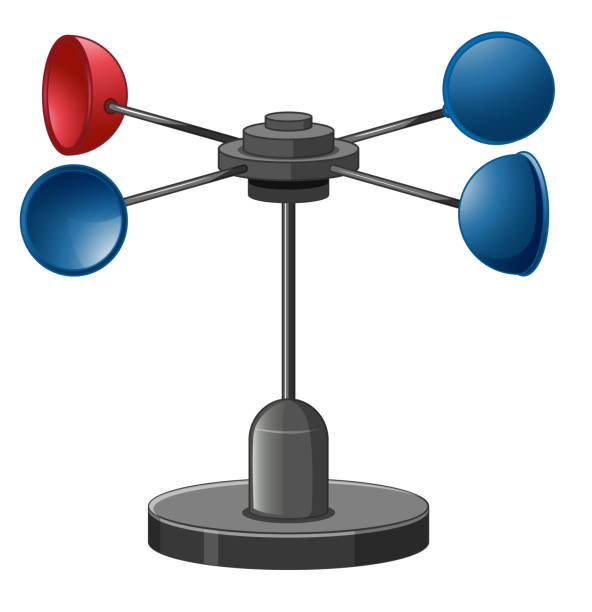How an Anemometer Can Enhance Your Weather Monitoring System
How an Anemometer Can Enhance Your Weather Monitoring System
Blog Article
Anemometers Unveiled: Recognizing Their Importance in Environmental Monitoring and Precaution
The role of anemometers in environmental monitoring and safety procedures is commonly undervalued, yet their relevance is obvious. These instruments have a long background rooted in scientific query and technical innovations, advancing to end up being important tools in different areas. From weather forecasting to aeronautics safety and security, anemometers play a critical function in supplying precise data that educates decision-making processes and improves overall safety and security. Understanding the complexities of anemometers unveils a world of essential understandings that are essential to our understanding of the setting and the steps we require to make sure safety and security.
Background of Anemometers
The evolution of anemometers can be mapped back to the ancient human beings where fundamental wind gauging gadgets were first used. One of the earliest recognized anemometers was the hemispherical cup anemometer designed by Leon Battista Alberti in the 15th century.
In the 18th century, the distinguished scientist John Thomas Romney Robinson introduced the Robinson anemometer, which included four hemispherical mugs placed on horizontal arms that extended from a main axis. This layout came to be a standard in meteorological measurements due to its precision and reliability. Over the years, improvements in innovation caused the development of even more modern-day anemometers, including ultrasonic anemometers and laser Doppler anemometers, supplying raised precision and effectiveness in gauging wind speed and direction. The background of anemometers showcases a remarkable journey of development and progress in the area of meteorology.
Kinds Of Anemometers
Throughout the area of meteorology, different kinds of anemometers have actually been established to precisely determine wind speed and direction. Sonic anemometers make use of ultrasonic signals to measure wind rate and instructions accurately. Hot-wire anemometers operate based on the concept that the cooling result of wind on a heated wire is proportional to the wind rate.
Applications in Weather Forecasting
Having reviewed the various sorts of anemometers made use of in meteorology for gauging wind speed and instructions, it is important to discover their functional applications in the field. Anemometers play an essential function in weather forecasting by providing exact and real-time data on wind problems (anemometer). Meteorologists utilize anemometers to check wind speed and direction to anticipate climate patterns, issue cautions for severe climate occasions like hurricanes, storms, and hurricanes, and examine climatic problems for air travel safety
In meteorology, anemometers help in understanding neighborhood and regional wind patterns, which are vital for forecasting weather condition changes and figuring out climatic fads. These gadgets are additionally utilized in study to examine microclimates, urban warm islands, and air contamination dispersion. Additionally, anemometers are used in agriculture to maximize crop administration techniques, such as watering and chemical application, based upon wind conditions.
Value in Aviation Safety And Security
An important element of making sure air travel safety and security depends on the meticulous monitoring of wind conditions making use of anemometers. Anemometers play an essential function in aviation by giving real-time information on wind rate and instructions, assisting pilots in making notified decisions during flight, landing, and liftoff. Solid and unpredictable winds can significantly affect airplane procedures, making it crucial for air travel i thought about this authorities to rely upon precise wind dimensions to make certain the safety and security of guests and team.

In the dynamic setting of aviation, where also minor adjustments in wind rate and direction can have extensive effects, anemometers stand as vital tools for advertising risk-free and protected air traveling.
Duty in Environmental Research
Exactly how do anemometers contribute to improvements in ecological research study? Anemometers play an essential duty in environmental research by offering crucial data on wind rate and instructions. This information is important for recognizing various atmospheric processes, such as air contamination dispersion, climate patterns, and climate adjustment. By accurately gauging wind features, anemometers assist scientists evaluate the motion of pollutants in the air, examine the influence of commercial emissions, and anticipate the spread of impurities in the setting.


Conclusion
In final thought, anemometers have played an essential duty in environmental surveillance and safety and security measures. Recognizing the relevance of anemometers is essential for accurately gauging wind speed and instructions, which is vital for predicting climate patterns, making certain safe aviation procedures, and conducting ecological studies.
One of the earliest known anemometers was the hemispherical mug anemometer designed by Leon Battista Alberti in the 15th century. Over the years, innovations in modern technology led to the development of more modern-day anemometers, consisting of ultrasonic anemometers and laser Doppler anemometers, providing raised accuracy and performance in determining wind rate and direction. Hot-wire anemometers click to read more operate based on the concept that the cooling result of wind on a warmed cable is proportional to the wind speed. Meteorologists make use of anemometers to keep track of wind rate and instructions to anticipate weather condition patterns, concern warnings for extreme weather condition occasions like twisters, tornados, and typhoons, and examine climatic problems for air travel safety.
Comprehending the importance of anemometers is important for accurately gauging wind rate and direction, which is crucial for anticipating weather condition patterns, ensuring secure aeronautics operations, and performing environmental research studies. (anemometer)
Report this page